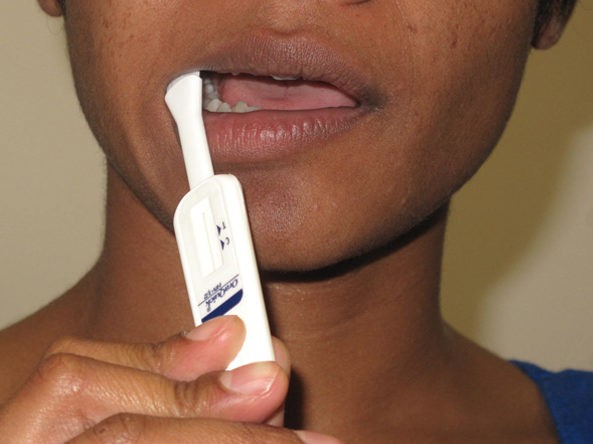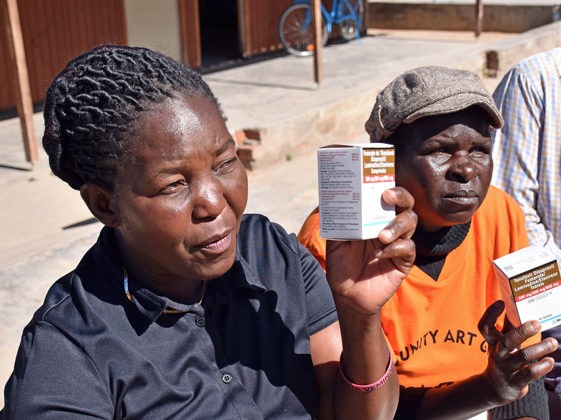Article and Study Summary
Multimonth dispensing of up to 6 months of antiretroviral therapy in Malawi and Zambia (INTERVAL): a cluster-randomised, non-blinded, non-inferiority trial.
Published in:
Lancet Glob. Health. 2021;9(5):e628-e638.
https://doi.org/10.1016/S2214-109X(21)00039-5
Authors:
Hoffman RM, Moyo C, Balakasi KT, et al.
Summary:
The Varying Intervals of Antiretroviral Medication Dispensing to Improve Outcomes for HIV (INTERVAL) study was a pragmatic, cluster-randomized, non-inferiority trial that compared 6-monthly antiretroviral therapy (ART) dispensing to standard of care and 3-monthly ART dispensing among people living with HIV (PLHIV) in Zambia and Malawi. Clinically stable adults on ART for >6 months were enrolled in health facilities that were randomized to either provide standard of care ART dispensing, 3-monthly ART dispensing, or 6-monthly ART dispensing. The primary outcome of interest was retention in care at 12 months. Retention among participants receiving 6-monthly ART dispensing was found to be non-inferior to standard of care and 3-monthly ART dispensing. Additional cost analyses found modest cost savings for clinics and for participants in the 6-monthly ART dispensing group compared to the standard of care. As programs scale up facility-based multimonth dispensing of ART, these results suggest this approach will not adversely affect early retention in care.
Discussion Questions:
- How could the findings in this study impact policy where you work?
- What would it take to implement this intervention in programs you work with? Do you have any experiences to share?
Please share your thoughts and experiences with us in the comments section below.
Full Synopsis:
PDF version available in English, French, and Portuguese.
Study Summary
The Varying Intervals of Antiretroviral Medication Dispensing to Improve Outcomes for HIV (INTERVAL) study was a pragmatic, cluster-randomized trial that assessed whether retention in care with 6-monthly antiretroviral therapy (ART) dispensing was non-inferior to standard of care and 3-monthly ART dispensing in people living with HIV (PLHIV).
Study Setting
- Thirty health facilities in Malawi and Zambia.
- At the time of study implementation, ART guidelines in Malawi and Zambia recommended 3-monthly dispensing for patients who were clinically stable, but adherence to guidelines was variable, with most patients receiving between 1 and 3 months’ supply per refill.
Methods
- PLHIV were eligible to participate if they were ≥18 years of age, on ART for ≥6 months and considered clinically stable.
- Individuals were excluded if they were women who were pregnant or breastfeeding, clinically unstable, had a non-communicable disease, were on an ART regimen other than first-line ART, or had an increased viral load within 6 months of screening.
- A cluster was defined as a health facility providing outpatient ART care and 15 clusters per country were selected based on ART cohort size, completeness of medical records, and willingness to participate. Clusters were matched on characteristics, including country, ART cohort size, facility type, and region or province.
- Matched clusters were randomly assigned (1:1:1) to receive either standard of care ART dispensing (typically 1–3 months, depending on provider judgment), 3-monthly ART dispensing, or 6-monthly ART dispensing. For all groups, clinical service delivery occurred simultaneously with the dispensing visits.
- Potential participants were recruited in the ART clinic waiting areas and those who consented were administered a questionnaire by study staff. Participants then completed their routine clinical visit with a site provider and received ART, dispensed as per the facility’s intervention allocation. Participants in the 6-monthly dispensing group were offered opaque plastic bags to assist with carrying and concealing the large supply of medications.
- The baseline questionnaire obtained information on sociodemographic characteristics, and travel and opportunity costs associated with the participants’ ART clinic visits. Participants’ medical records were also reviewed to collect clinical information, including date of ART initiation, history of ART clinic visits, and ART dispensing intervals in the previous year.
- After the enrollment visit, all care was provided according to the standard of care at the facility, including adherence counseling and tracing of study participants who missed scheduled refill visits or were lost from care.
- Participants were followed for 14 months to enable assessment of retention at 1 year (12 months plus a 60-day window), at which point study staff abstracted data from participants’ medical records, including dates of ART refill visits over the year, and number of pills dispensed.
- To determine the number of clinic visits during the follow-up period that were not for ART dispensing, the medical record of each participant in Zambia was reviewed. In Malawi, such visits were recorded in patients’ health passports, which were retained by patients. Study staff therefore scanned the health passports of a random subset of participants from each group to estimate the number and types of non-ART additional visits.
- Site-level cost data were abstracted from a representative subsample of sites’ performance reports and finance and procurement records. Cost data for items and services procured above the level of the facility were obtained from national sources and commercial price lists.
- The primary outcome was retention in care at 12 months, defined as the proportion of participants with <60 consecutive days without ART at any point during follow-up.
- Secondary outcomes included cost, assessed as the average cost per participant and the average cost per participant who met the primary outcome in each group.
- To estimate the costs to participants of obtaining ART, baseline survey data were used to calculate an average cost per clinic visit, including time, transport, and lost wages.
- The primary outcome was analyzed by intention to treat and the non-inferiority margin was set at 2.5%.
Study Population and Follow-up
- Between May 2017 and April 2018, 14,430 individuals were screened for eligibility and of these 9,118 participants were randomized: 3,123 participants (from ten clusters) to standard of care, 2,896 participants (ten clusters) to 3-monthly ART dispensing, and 3,099 participants (ten clusters) to 6-monthly ART dispensing.
- Of the 5,312 who were ineligible, the most common reasons for exclusion were being on an ART regimen other than first-line ART (8.8%) and having an increased viral load within 6 months of screening (8.7%).
- Primary outcome data at 12 months were available for 8,719 participants (3,012 in the standard of care group; 2,726 in the 3-monthly ART dispensing group; and 2,981 in the 6-monthly ART dispensing group).
- Median age of participants was 42.7 years (interquartile range [IQR] 36.1–49.9), 66.2% were women and 63.3% were married.
- Median duration on ART at enrollment was 5.0 years (IQR 2.7–8.2) and the median ART dispensing interval in the year before enrollment was 60 days (IQR 43–90) in the standard of care group, 80 days (IQR 60–90) in the 3-monthly ART dispensing group, and 78 days (IQR 60–90) in the 6-monthly ART dispensing group.
- Of the participants assigned to the intervention groups, 62.9% in the 3-monthly ART dispensing group and 85.0% in the 6-monthly ART dispensing group received the intervention per protocol.
- The most common dispensing interval in the standard of care group was 3 months (59.0%), followed by 2 months (12.4%), and 6 months (11.0%).
Primary Outcome
- The primary outcome of 12-month retention was met by 82.3% of participants in the standard of care group, 86.4% of participants in the 3-monthly ART dispensing group, and 91.5% of participants in the 6-monthly ART dispensing group.
- The differences in retention were largely driven by Zambia (74.6% for standard of care, 82.3% for 3-monthly ART dispensing, and 89.7% for 6-monthly ART dispensing), whereas retention in Malawi was higher overall and across groups (89.7% for standard of care, 90.2% for 3-monthly ART dispensing, and 93.2% for 6-monthly ART dispensing).
- After adjusting for clustering, the 6-monthly ART dispensing group was non-inferior to the standard of care group (9.1% increase; 95% confidence interval [CI] 0.9–17.2) and to the 3-monthly ART dispensing group (5.0% increase; 95% CI 1.0–9.1).
- Participants in the 6-monthly ART dispensing group had the fewest mean days without ART (17.6 days; IQR 16.1–19.2) compared with the 3-monthly ART dispensing group (30.6 days; IQR 28.5–32.7) and the standard of care group (36.1 days; IQR 33.8–38.4), and findings were consistent for Malawi and Zambia.
- Post-hoc analyses of urban versus rural sites suggested more benefit of 6-monthly ART dispensing versus standard of care for individuals receiving care in urban facilities in both Malawi (risk difference 9.0%; 95% CI 2.1–15.9) and Zambia (risk difference 15.1%; 95% CI 0.4–29.8), with similar results for 6-monthly ART dispensing versus 3-monthly ART dispensing.
Non-ART Clinic Visits
- In Zambia, data for additional clinic visits not linked to ART dispensing were collected for all participants with primary endpoint data at 12 months. Of the 4,169 participants, 85.3% had no additional non-ART clinic visits and 11.9% had one visit.
- Visit patterns were similar by group and no major differences by sex were identified. No data were collected regarding the reasons for additional visits in Zambia due to limitations in the information available in medical records.
- In Malawi, additional non-ART visit data were collected for 254 participants from all 15 sites (median 17 health passports per site; IQR 13–21). Most individuals had zero (61.8%) or one (18.1%) non-ART facility visit.
- Men were more likely than women to have no additional visits (70.0% vs. 57.3%) and acute illnesses were the cause of most visits (85.8%), followed by visits for non-communicable diseases (10.8%).
Cost Analyses
- Overall, 8,540 participants were included in the cost analyses (4,400 from Malawi and 4,140 from Zambia).
- Of participants who were retained at 1 year, those in the 6-monthly ART dispensing group made an average of one (in Zambia) or two (in Malawi) fewer clinic visits per year than did participants in the other groups.
- For retained participants in Malawi, the provider incurred a mean cost of $89.00 per participant in the standard of care group, $88.40 in the 3-monthly ART dispensing group, and $85.92 in the 6-monthly ART dispensing group. A similar pattern was observed in Zambia, but at larger overall costs of $143.60 in the standard of care group, $141.60 in the 3-monthly ART dispensing group, and $131.13 in the 6-monthly ART dispensing group. Antiretroviral medications accounted for a large proportion of overall costs in both countries and all groups.
- Average annual costs to participants for time losses were lowest in the 6-monthly ART dispensing group compared with the standard of care group, with a reduction in time accessing care of 45% in Malawi and 33% in Zambia.
- Similarly, lost potential income was lowest in the 6-monthly ART dispensing group compared with the standard of care group with a reduction of 25% in Malawi and 33% in Zambia.
- Among individuals who incurred costs for transportation to clinics (approximately a third of participants), costs were lowest in the 6-monthly ART dispensing group in both countries by more than 25%, relative to the costs in the standard of care group.
Critical Analysis
This pragmatic, cluster-randomized trial found 6-monthly ART dispensing was non-inferior to the standard of care or 3-monthly ART dispensing when comparing retention in care at 12 months among clinically stable PLHIV. The majority of participants did not require any additional non-ART refill visits to the clinic, and there were modest cost savings for clinics and participants with 6-monthly ART dispensing compared to the standard of care.
The following points should be considered when interpreting the study findings:
- Masking of the participants and investigators was not possible because allocated groups were obvious due to the amount of medication dispensed and the timing between appointments.
- Virological suppression was initially planned as a secondary outcome, but these data were not available due to delays in viral load scale-up in both Malawi and Zambia.
- The cost analyses excluded the cost of laboratory tests, clinic visits not associated with ART refills, and any other services provided to patients, as these data were not available. Therefore, the total cost of clinical visits reported is likely an underestimate.
- Antiretroviral medications accounted for a large proportion (≥75%) of clinic costs in both countries and all groups, with only modest savings attributed to a reduced number of visits. However, at scale these savings could have an impact on program finances.
- Changing national ART guidelines for multimonth dispensing at the time meant that the standard of care group consisted of a mix of ART dispensing intervals, with the majority receiving 3-monthly ART dispensing in this group.
- Additional clinic visits were less common in Zambia than Malawi. However, this difference may be due to data limitations in Zambia where only ART clinic records were reviewed, whereas in Malawi, health passport data include visits that would have occurred outside of the ART clinic.
Implications
The pragmatic, cluster-randomized, non-inferiority INTERVAL study found that facility-based, 6-monthly dispensing of ART (6MMD) did not adversely affect retention in care at 12 months among clinically stable PLHIV in Zambia and Malawi, and resulted in modest cost savings for the clinics. However, this study was unable to assess viral load suppression or retention beyond 12 months for PLHIV enrolled in this facility-based differentiated service delivery model. Nonetheless, the model described furthers the goal of client-centered care, as demonstrated by reduced costs for PLHIV attending ART clinics. As many countries are already scaling up facility-based 6MMD, this study provides reassuring evidence on early retention in care.
This article synopsis was written by Cassia Wells. Share your thoughts on this article or suggest an article for Journal Club by emailing her at caw2208@cumc.columbia.edu
Articles of Note:
- Safety and immunogenicity of the ChAdOx1 nCoV-19 (AZD1222) vaccine against SARS-CoV-2 in HIV infection: a single-arm substudy of a phase 2/3 clinical trial
- Safety, Immunogenicity, and Efficacy of the BNT162b2 Covid-19 Vaccine in Adolescents
- Weight change following antiretroviral therapy switch in people with viral suppression: pooled data from randomized clinical trials.
- Effect of Bamlanivimab vs Placebo on Incidence of COVID-19 Among Residents and Staff of Skilled Nursing and Assisted Living Facilities: A Randomized Clinical Trial








